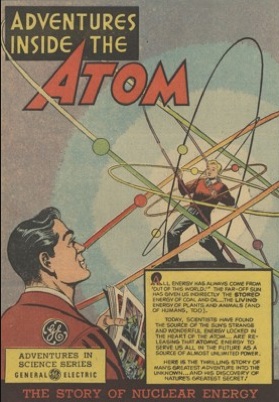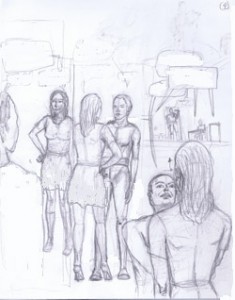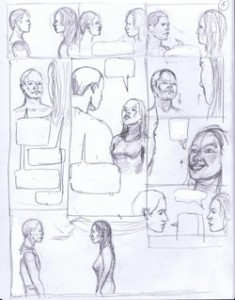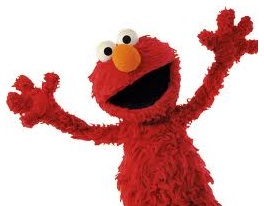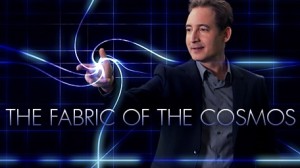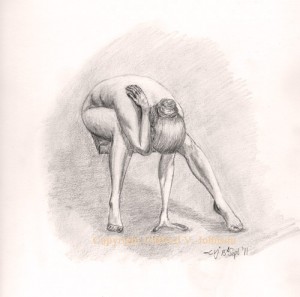Well, it seemed to go well. I rambled too long and unstructuredly in my off-the-cuff speech (and long thank-you list) at the beginning, but nobody seemed to mind so much since the films were the main focus, and people loved the program. I only got two shots of the activities worth sharing since I was occupied with being host and so forth… but there were so many reporters there, and so I expect there’ll be more showing up all over the place. There were about 140 people in attendance, I was told, which is nice to hear.
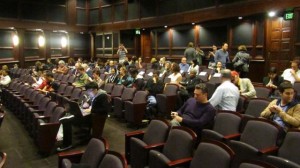
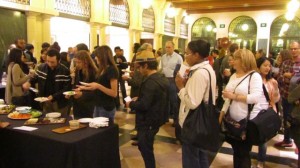
People seemed to really love the whole idea of the competition and showcase, and really to understand what I am trying to do with this whole program, so that’s heartening. I hope this also translates into lots of interest next year, with even more filmmakers joining in and making films (and faculty being supportive and helping out as matchmakers and so forth).(This is all assuming I find a sponsor to fund the thing.)
Oh! I opened envelopes Oscar-style and gave out the awards. Here are the results:
1st place (and $2500): Time (Kevin Le, Edward Saavedra)
2nd place (and $1500): It’s All in You (Maria Raykova, Andy Su, Jabril Mack, Mara Guevarra, Kayla Carlisle – a freshman team!)
3rd place (and $500): Superluminal Neutrinos in 5 Minutes (Josh Heineman, Nate Fulmer, Michael Powell)
Honourable Mention (and $500): Dance with Newton’s Laws (Linda Jules, Anna Zaferiou)
Honourable Mention (and $500): Yaddda, Yadda, Yada (Kimberly Laux, Simon Wilches Castro, Scott MacDonald, Anna Drubich, Laura Cechanowicz)
(Filmmaker’s roles and the synopses can be found here.)
Then there was a surprise extra prize from Richard Weinberg (Professor in the Division of Animation and Digital Arts). He came up and gave a limited edition print […] Click to continue reading this post →



